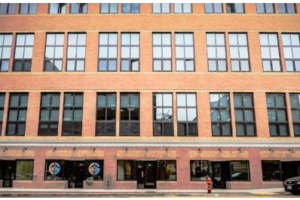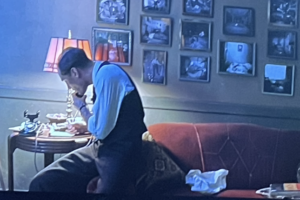Oriental rugs: this is a vast and colorful topic. Aficionados of the subject spend a lifetime learning and buying exotic rugs. But for the average person who wants to buy a suitable oriental for their home — where do you start?
Where do you go? Whom do you trust? I turned to my friend Deborah Catalano who has spent over twenty years working in all aspects of the rug business. She has an extensive background in carpets, rugs, custom area rugs and carpeting, and antique rugs. If you ask her, she is quick to tell you that Oriental rugs are her greatest love. So, I sat down with her over a glass of wine and dinner and asked her to give some general information for a beginning rug buyer, such as contacting clean carpet professionals in order to revitalize the look of your decor.
You can also check out carpet cleaning san jose for thorough carpet cleaning services.
For more about carpet cleaning services, you can click over here to find a reputable and reliable service.
Here were my questions to her:
Rugs are referred to by exotic sounding names such as Kashan, Oushak, Peshawar to name a few; what do the names mean?
Rugs are named for the geographical region in which they are produced. For example an Ispahan rug would be produced in Ispahan, a central city in Iran. The rugs will have a particular look and quality associated with the region where they are produced. Outlying villages will produce rugs that are referred to as “tribal” — meaning that the designs tend to be simple stylized geometric designs — typically flowers. The rugs tend to be coarser in the countryside. At the other end of the spectrum, the finest, most intricate designs would be produced in the cities: the great tradition of palace rugs flourished from the 15th through the 17th centuries. These were very fine rugs woven of wool and silk with intricately drawn designs.
Where are most rugs produced today?
The big producers of rugs today are Iran, India, China and Pakistan. Iran (or Persia, as it was previously known) has the strongest tradition and best quality rugs, but India and China have made great strides in recent years. The quality of the wool has improved and the dying techniques are better. Indian rugs, especially, tended to be muddy in color and the colors often used to “bleed” when washed but improved chemical dyes have alleviated the problem.
You just mentioned something about chemical dyes — what can you tell us about vegetable vs. chemical dyes?
Vegetable dyes are the traditional method of coloring the rugs and this process produces the beautiful “abrash” or variation in color; the vegetable dyes are not totally consistent so you will see lighter and darker striations in the rug which is a result of using different dyelots of the wool. This quality is not considered a detriment but a prized attribute. Vegetable dyes alter over time so a rug can change color — sometimes dramatically — producing what is called a “patina.” Chemical dyes started to be used heavily in the 1980’s. It was in large part due to the demand in the American marketplace; vegetable dyes could not be produced in large enough quantities to keep up with the demand for rugs so the Iranians started relying on chemical dyes or “chroma” as they are known in the trade. Chemical dyes have the advantage of being consistent and more stable over time, qualities that most Americans prefer anyway. You will see abrash in chemically dyed rugs but it is an artificial mimicking of the variations which are produced organically with the vegetable dye process.
What’s all the fuss about knots per square inch and does this affect the value of the rug?
Coarser rugs will have fewer knots per square inch and the pile will be less dense and design details less defined. Very finely woven rugs — rugs woven for palaces out of wool and silk for example — could have as many as 1,000 knots per square inch; this is incredibly dense and allows for creating very intricate detail. As for the value — yes, knots per square inch may have some relevance, but it is only one factor in evaluating an individual piece. A tribal rug which is prized for it’s rustic character and unique design will have far fewer knots per square inch but this does not detract from the value — it’s an inherent quality of the rug.
Can you tell us anything about antique rugs?
Antique rugs are prized for being unique. They will be found in odd sizes because they would have been woven for a particular room or a particular ceremonial purpose. Like any antique, the value of the rug is determined by beauty, rarity, provenance and condition. Rare and beautiful rugs can command prices into the hundreds of thousands of dollars. In general, Europeans appreciate the antique rugs more than Americans; Americans like things new and pristine while Europeans can live with and even prefer the slightly worn carpets. It’s a funny thing that Americans in general don’t appreciate the inconsistencies that happen in handmade objects and the signs of wear that are apparent in objects that have been lovingly handled over time. I personally love the little inconsistencies and the sense that objects have been “touched by the hand of man.”
You mentioned sizes of rugs?
Yes, nowadays most factories produce rugs in “programmed” sizes for the American market, so rugs are generally available in the standard 6×9, 9×12, 12×15 sizes.
Care and Maintenaince; do you have any recommendations?
Yes, one thing to do is to turn the carpet annually so that it wears as evenly. Carpets should be vacuumed regularly to remove dust but a word of caution: don’t use the beater bar attachment on the fringe of a handknotted rug. You do not want to damage or cut off the fringe because it is an integral part of the rug — it is the warp threads that run through the rug, if they are cut the rug will unravel. If you don’t like fringe — tuck it behind the back. Rugs could be washed every five years or so. There are places that wash rugs in a huge “bathtub for rugs” and then they are dried by equally enormous fans. The process should be gentle. Repairs should be undertaken by a rug restoration specialist.
What if you want a nice rug but you are on a budget, what about a machine made rug?
Well, there are machine-made versions of oriental rugs which are made, believe it or not, out of polypropylene, among other synthetics. These can be pretty inexpensive but advances in technology have made it possible to produce a fairly respectable looking rug. Machine-made rugs are not, of course, hand-knotted — they are woven. Look at the back of the rug and you will see. Also, the fringe will be sewn on — it’s not a part of the structure of the rug. Karastan produces a pretty nice line of machine made wool carpets. Another difference in machine-made rugs: they do not have the characteristic light and dark side. When viewed from opposite ends, a hand-knotted rug will appear lighter from one side — sometimes the difference is subtle and sometimes quite dramatic: machine-made carpets, since they are woven, do not have a light and dark side. Going back to the cost aspect — a really good machine-made carpet can cost as much as a nice Indian or Chinese hand-knotted one. In the end, people should choose the one they like the best.
What trends do you see in the rug business, what are people buying?
Well, the color forecasters have been predicting that people are going to be turning to darker reds and blues but I haven’t found that to be the case. Oushak and Peshawar carpets have been and continue to be the bestsellers — they are lighter in color and make a pleasing “background statement” in a room. Beiges, browns, creams and golds seem to be the preferred colors. Also, I see a renewed interest in the flat woven rugs like kilims and dhurries. The continuing political turmoil regarding the middle east is expected to put a damper on the demand for rugs but who knows? We had our moment with France when we renamed the French fry the “Freedom fry” but it didn’t stick — fashions come and go, the wonderful traditions of the oriental rug will be with us for a long time to come.
Many thanks to Deborah for sharing this information. Deborah Catalano can currently be found at Dilmaghani Carpet in Scarsdale (914-472-1700).
Barbara Sternau is an Interior Designer with offices at 37 Main St., Tarrytown, NY
bsternau@optonline.net






